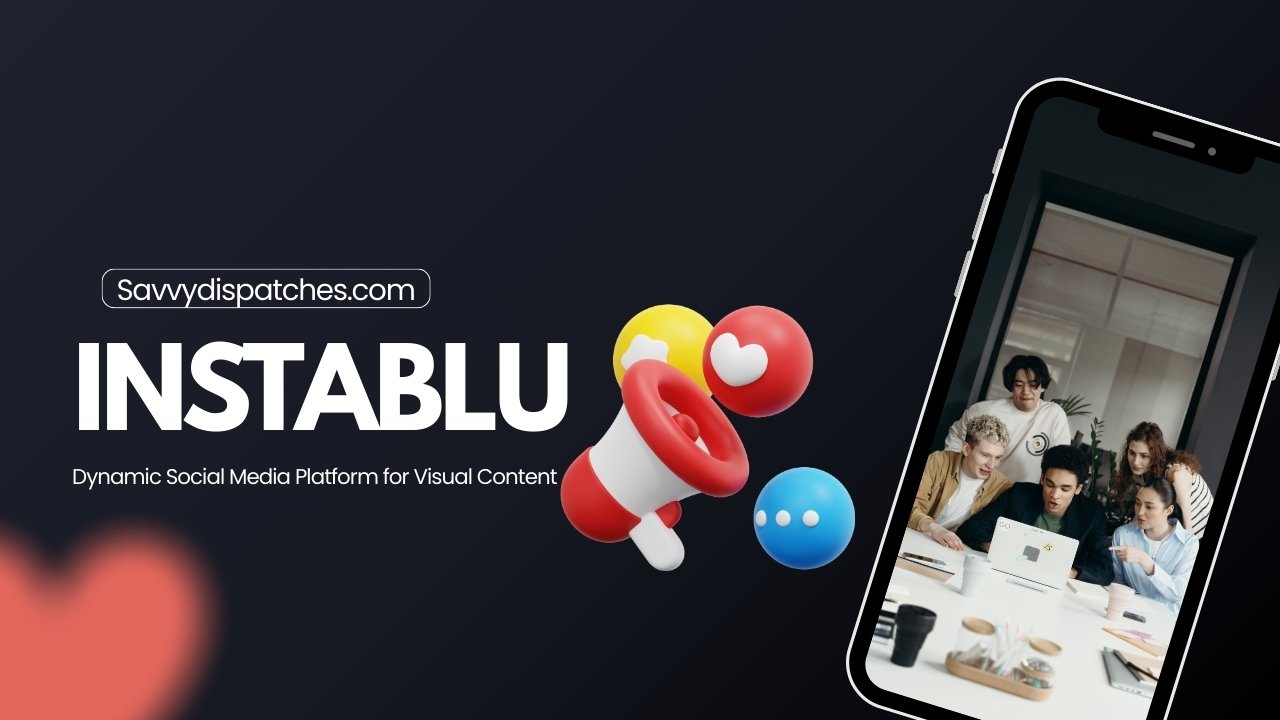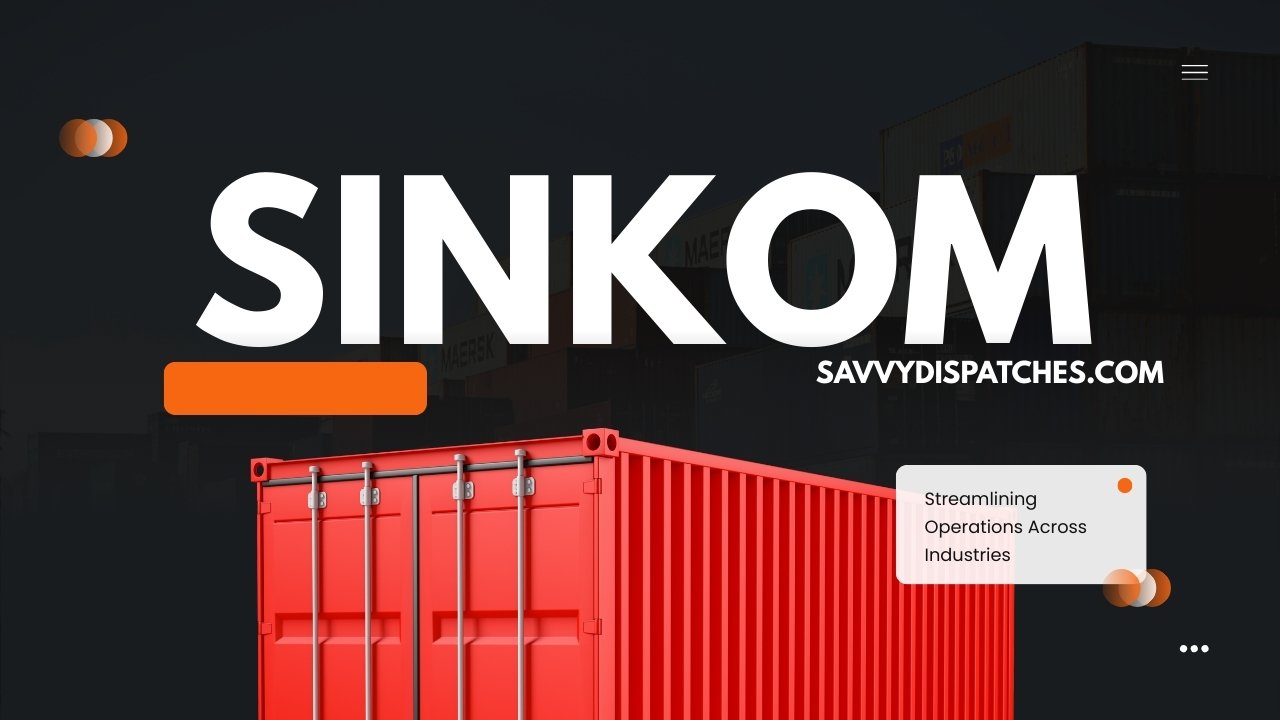Tech
The Evolution of Winding Technology: Innovations and Industry Applications

Winding technology plays a crucial role in various industries, from aerospace to medical devices and energy storage solutions. Over the years, advancements in precision winding machines have revolutionized manufacturing efficiency and product quality, making them indispensable to modern production processes.
One leading company driving this innovation is Guangri Electronic Machinery Co., Ltd, a Chinese manufacturer specializing in precision winding machines for diverse applications. Their expertise ensures high-quality winding solutions for industries requiring extreme precision and durability. Guangri winding machine technology is designed to meet the demands of evolving industries by incorporating automation, AI-based controls, and high-speed performance capabilities.
The Role of Winding Machines in Modern Manufacturing
Precision winding machines are essential for creating high-performance coils, transformers, and motors used across various industries. These machines ensure uniform wire distribution, reducing the chances of overheating, inefficiencies, or defects in electrical components. Advanced winding machines can handle complex configurations, allowing manufacturers to produce components with enhanced durability and efficiency.
Key Innovations in Winding Technology
The evolution of winding machines has been marked by several key technological advancements:
- Automated Winding Systems: Modern winding machines incorporate automation, reducing manual labor while improving precision and consistency.
- High-Speed Performance: Advances in motor technology enable machines to operate at higher speeds without compromising accuracy.
- AI and Smart Controls: Integration of AI-based monitoring systems helps in real-time error detection and process optimization.
- Multi-Axis Winding: Complex geometries and patterns can now be achieved with multi-axis control features, expanding the range of applications.
- Eco-Friendly Solutions: Many modern machines are designed for energy efficiency, minimizing waste, and reducing environmental impact.
Industry-Specific Applications of Precision Winding Machines
Aerospace Industry
Precision winding machines are widely used in the aerospace sector for producing lightweight, high-efficiency electrical components. These include electromagnetic coils, motor windings, and transformers that meet stringent safety and performance standards.
Medical Devices
Medical-grade coils and sensors require exceptional precision, and advanced winding machines ensure consistent performance in devices such as MRI machines, pacemakers, and diagnostic equipment.
Energy Storage and Electric Vehicles (EVs)
With the rise of electric vehicles and renewable energy solutions, precision-wound components are crucial for battery management systems, inverters, and high-performance electric motors. Winding machines play a vital role in ensuring efficiency and longevity in energy storage technologies.
Consumer Electronics
Miniaturized winding solutions are essential for compact electronic devices such as smartphones, wearables, and wireless charging coils. Innovations in precision winding contribute to higher performance and longer-lasting electronic components.
Future of Winding Technology
As industries continue to evolve, the demand for more advanced and efficient winding machines will only grow. Future innovations may include AI-driven predictive maintenance, enhanced material compatibility, and even greater automation. Companies like Guangri Electronic Machinery Co., Ltd remain at the forefront of these advancements, ensuring that manufacturers worldwide have access to the latest winding technologies.
With the rapid advancement of AI, IoT, and Industry 4.0, precision winding machines will continue to improve, offering higher efficiency, reduced waste, and better scalability for manufacturers across multiple industries.
Conclusion
The evolution of winding technology has significantly impacted various industries, making precision winding machines indispensable. As companies seek to improve efficiency, reduce costs, and enhance product quality, advanced winding solutions will play a critical role in shaping the future of manufacturing. By integrating smart automation, AI-driven monitoring, and high-speed capabilities, businesses can stay ahead in an increasingly competitive market.
Tech
Instablu: Dynamic Social Media Platform for Visual Content

In a world where visual storytelling reigns supreme, Instablu emerges as the go-to platform for creators and audiences alike. Imagine a space designed specifically for sharing captivating images and videos, fostering connections through vibrant visuals. Instablu isn’t just another social media site; it’s a dynamic hub that transforms how we interact with content.
With its innovative approach, this platform opens doors to new opportunities for engagement and creativity. Users can unleash their artistic potential while connecting with like-minded individuals across the globe. So what makes Instablu stand out in an ocean of social networks? Let’s explore how it redefines the landscape of visual content on social media.
How Instablu Differs from Other Social Media Platforms
Instablu sets itself apart through its focus on visual storytelling. Unlike traditional social media platforms, which often favor text-heavy content, Instablu prioritizes images and videos as the primary mode of communication.
The platform fosters a unique community where creativity thrives. Users can explore diverse categories that pique their interests, from art and photography to fashion and travel. This specialization helps connect like-minded individuals more effectively.
Another distinctive feature is its interactive design. With tools for real-time collaboration and feedback, users engage with each other’s work in meaningful ways.
Additionally, Instablu emphasizes authenticity over curated perfection. It encourages users to share raw moments alongside polished visuals, creating a balanced portrayal of life.
This blend of creative freedom and genuine connection makes Instablu an exciting alternative in the crowded realm of social media options today.
Features of Instablu
Instablu offers a refreshing array of features designed to enhance user interaction. The platform prioritizes visual storytelling, allowing users to share high-quality images and videos effortlessly.
A unique aspect is its customizable feed. Users can tailor their experience based on interests, ensuring they see content that resonates with them. This personalization fosters deeper connections among community members.
Engagement tools are robust as well. Features like polls and questions encourage audience participation, making every post interactive. Creators can track performance through insightful analytics, helping them refine their strategies over time.
Another notable feature is collaborative spaces where users can join forces on projects or campaigns. This encourages creativity and broadens reach within the platform’s vibrant ecosystem.
With seamless integration for sharing across other social networks, Instablu ensures that content reaches a wider audience without losing momentum. It’s a dynamic playground for anyone passionate about visual content creation.
The Power of Visual Content on Social Media
Visual content drives engagement like nothing else on social media. Images, videos, and graphics capture attention within seconds. Users scroll through their feeds quickly, making visuals essential for standing out.
People process images faster than text. A compelling picture can convey emotions and messages instantly. With platforms like Instablu focusing on visual storytelling, creators have a unique opportunity to express themselves in vibrant ways.
Moreover, posts with engaging visuals receive more likes and shares than those without. This creates a ripple effect that increases visibility exponentially.
Colorful designs or striking photography not only attract viewers but also encourage interaction. When users see appealing content, they are more likely to comment or share it with friends.
Incorporating trends such as infographics or short videos can elevate your presence significantly. As the landscape of social media continues to evolve, embracing visual elements is key to thriving in this dynamic environment.
Tips for Creating Engaging Visuals on Instablu
Creating engaging visuals on Instablu requires both creativity and strategy. Start with vibrant colors that catch the eye. Bold hues can draw attention, while softer tones evoke a sense of calm.
Consider your audience’s preferences when crafting images. What resonates with them? Tailor your visuals to their tastes for greater impact.
Incorporate storytelling elements into your posts. A compelling narrative can turn an ordinary image into something memorable. Use captions to enhance this connection.
Experiment with different formats like videos or carousels. Variety keeps content fresh and encourages interaction from followers.
Maintain consistency in style across your posts. This helps establish a recognizable brand identity, making it easier for users to engage with your content repeatedly on Instablu.
Utilizing Hashtags and Influencers on Instablu
Hashtags are the lifeblood of visibility on Instablu. They organize content and make it discoverable to a broader audience. Using popular, relevant hashtags can significantly increase engagement rates.
Research trending hashtags within your niche before posting. This simple step enhances the chances of reaching users who resonate with your visuals.
Collaborating with influencers takes things further. Influencers bring established audiences eager for fresh content. Partnering can amplify your reach and lend credibility to your brand.
When approaching influencers, be authentic in your proposal. Alignments should reflect genuine interest rather than mere promotion.
Creating unique branded hashtags encourages community participation while enhancing brand identity. It invites users to join conversations around shared interests and experiences related to your content.
Harnessing these strategies can elevate not just individual posts but also establish a thriving presence on Instablu.
Monetization Opportunities on Instablu
Instablu opens the door to various monetization avenues for creators and businesses alike. Users can leverage their visual content by engaging directly with their audience through sponsored posts and partnerships. Brands are constantly on the lookout for authentic voices, making this a prime opportunity.
Another lucrative option is selling digital products or services directly from one’s profile. Whether it’s photography presets, e-books, or exclusive memberships, Instablu’s interface supports seamless transactions.
Affiliate marketing also thrives here. By promoting products through unique links in posts or stories, users earn commissions on sales generated from their referrals. This strategy not only boosts income but also enhances engagement with followers.
Furthermore, creator funds may soon be part of Instablu’s offerings as it seeks to reward popular content creators for their contributions. The potential for earning grows alongside creativity on this innovative platform.
Potential Impact of Instablu on the Future of Social Media
Instablu is poised to reshape the social media landscape. With its focus on visual content, it encourages creativity and engagement like never before.
As users flock to platforms that prioritize authenticity, Instablu caters to this demand. The emphasis on high-quality images and videos elevates user experiences while fostering a sense of community.
This platform could also shift how brands connect with audiences. By utilizing eye-catching visuals, businesses can forge deeper relationships with consumers. It’s about storytelling through imagery—something traditional text-heavy platforms struggle with.
Furthermore, as more people embrace visual communication, Instablu might inspire other networks to adapt or innovate their features. The ripple effect could redefine digital interactions for years to come.
In an era where attention spans are fleeting, a visually-driven approach stands out. Instablu champions this movement toward dynamic expression in the social media realm.
Conclusion
Instablu brings a fresh perspective to the world of social media. With its focus on visual content, it stands out in an increasingly crowded digital landscape. Users are encouraged to express themselves creatively while connecting with like-minded individuals.
The platform’s unique features and emphasis on engaging visuals make it a powerful tool for brands and influencers alike. The potential for monetization adds another layer of appeal, allowing users not just to share but also to earn from their creativity.
As Instablu continues to grow, it could significantly influence how we interact online. By prioritizing dynamic visual storytelling, this platform may shape the future of social media engagement in exciting ways. Embracing this new wave can set you apart in your digital journey, making community building more vibrant than ever before.
Tech
Sinkom: Streamlining Operations Across Industries

In today’s fast-paced business world, efficiency is key. Companies across various industries are constantly seeking ways to optimize their operations and improve productivity. Enter Sinkom—a transformative solution designed to help businesses streamline their processes. With a focus on enhancing collaboration and reducing redundancies, Sinkom has quickly emerged as a go-to tool for organizations looking to elevate their operational game. Whether you’re managing a manufacturing unit, running an IT firm, or overseeing logistics, Sinkom offers tailored solutions that fit your unique needs. Let’s dive deeper into how this innovative platform can redefine the way you work!
The Benefits of Streamlining Operations
Streamlining operations can significantly enhance efficiency across various sectors. By eliminating unnecessary steps, businesses save valuable time and resources.
When processes are optimized, employees can focus on their core tasks rather than getting bogged down by redundancies. This shift not only boosts productivity but also fosters a more engaged workforce.
Cost savings emerge as another key advantage. Reduced operational complexities often lead to lower overhead expenses, allowing companies to allocate funds toward growth initiatives.
Improved customer satisfaction is an added benefit. Quicker response times and better service delivery create positive experiences that keep customers coming back for more.
Furthermore, streamlined operations provide clearer insights through data collection and analysis. Organizations can make informed decisions swiftly when they have easy access to critical information.
All these factors contribute to a competitive edge in today’s fast-paced market landscape. Adapting efficiently ensures longevity in business performance.
How Sinkom Works for Different Industries
Sinkom adapts seamlessly to various industries, enhancing operational efficiency across the board. In manufacturing, it streamlines production workflows and reduces downtime. Real-time data analytics empower managers to make informed decisions quickly.
For healthcare providers, Sinkom ensures patient management is smooth and organized. Appointment scheduling and electronic health records are integrated for better patient care.
In retail, inventory management becomes a breeze with automated stock tracking. Businesses can respond swiftly to trends without the hassle of manual checks.
The logistics sector benefits from streamlined shipping processes. Sinkom simplifies route planning and shipment tracking, boosting overall productivity.
Each industry experiences tailored functionalities that address their unique challenges while maintaining essential core features that drive success.
Real-life Success Stories from Companies Using Sinkom
Companies across various sectors are experiencing transformative results with Sinkom. For instance, a leading manufacturing firm managed to reduce production downtime by 30% after implementing Sinkom’s streamlined processes. The integration allowed for real-time tracking of inventory and workflow.
In the healthcare sector, a mid-sized clinic reported improved patient management efficiency. By utilizing Sinkom’s tools, they cut appointment scheduling time in half and enhanced communication between staff members.
A retail brand also shared their success story. After using Sinkom to analyze customer data more effectively, they increased sales by tailoring marketing strategies based on insights gleaned from their operations.
These examples illustrate how diverse industries benefit from adopting Sinkom’s platform, showcasing its adaptability and effectiveness in enhancing operational performance.
Features and Tools Offered by Sinkom
Sinkom boasts a robust suite of features designed to elevate operational efficiency. Its intuitive dashboard provides real-time insights, allowing businesses to track performance metrics at a glance.
Automation tools save time by streamlining repetitive tasks. This helps teams focus on more strategic initiatives rather than getting bogged down in minute details.
The platform also offers seamless communication channels. Teams can collaborate effortlessly through integrated messaging and file-sharing functionalities.
Customization is key with Sinkom. Users can tailor workflows to suit specific industry needs, ensuring that every operation aligns with organizational goals.
Advanced analytics empower decision-makers by turning data into actionable strategies. It’s not just about collection; it’s about transforming insights into improved outcomes.
These features make Sinkom an essential partner for any business looking to enhance productivity and drive growth across various sectors.
Easy Implementation and Integration with Existing Systems
Implementing Sinkom is designed to be a seamless experience. Businesses can rest easy knowing that integration with existing systems won’t disrupt daily operations.
The platform offers user-friendly tools and resources to guide teams through setup. Whether you’re using outdated software or the latest technology, Sinkom adapts smoothly.
You don’t need an IT team on standby for support. The intuitive interface allows staff from all departments to navigate easily.
Moreover, data migration is streamlined to ensure continuity. Existing data can be imported without hassle, minimizing downtime and maximizing productivity.
With flexible APIs, businesses can connect their current applications effortlessly. This means less training time and quicker adoption across teams.
Sinkom’s compatibility ensures companies maintain their unique workflows while enhancing overall efficiency. Every step of the process focuses on making your transition as frictionless as possible.
Pricing Plans and Options for Businesses
Sinkom offers a variety of pricing plans designed to cater to the unique needs of businesses, regardless of size. This flexibility allows organizations to choose a plan that aligns with their operational requirements and budget.
From small startups to large enterprises, there’s an option for everyone. Each plan provides essential features that help streamline processes and enhance productivity without breaking the bank.
Businesses can opt for monthly or annual subscriptions, allowing for easy financial planning. The longer commitment often comes with attractive discounts, making it even more appealing.
Additionally, Sinkom frequently updates its offerings based on user feedback. This ensures that clients receive value through continuous improvements tailored specifically to their industry demands.
Transparency is key; no hidden fees or surprise charges make budgeting straightforward. Every business can find a comfortable entry point while enjoying robust functionality from day one.
Future Developments and Updates for Sinkom
Sinkom is committed to continuous improvement. Future updates will focus on enhancing user experience and functionality.
Upcoming features include advanced analytics tools. These will provide businesses with deeper insights into their operations, enabling data-driven decisions.
Integration with emerging technologies is also on the horizon. This includes AI capabilities for predictive modeling and automation of routine tasks.
User feedback plays a crucial role in shaping future developments. Sinkom actively seeks input from its users to tailor enhancements that meet real needs.
The goal is to ensure that every update adds significant value, keeping pace with industry trends while maintaining ease of use. As businesses evolve, so too will Sinkom’s offerings, making it an indispensable tool across various sectors.
Conclusion: Why Sinkom is the Perfect Solution for Streamlining Your Operations
Sinkom stands out as a versatile and powerful tool for businesses aiming to enhance their operations. Its ability to adapt across various industries makes it an invaluable resource. By streamlining processes, reducing inefficiencies, and improving communication, Sinkom empowers teams to focus on what truly matters—delivering exceptional results.
The user-friendly features coupled with easy integration into existing systems mean that transition barriers are minimal. Companies can quickly reap the benefits without lengthy downtime or steep learning curves. The pricing plans cater to diverse business sizes and needs, ensuring accessibility for all.
As organizations look towards the future of operational efficiency, embracing tools like Sinkom will be essential. With ongoing updates and developments on the horizon, it’s clear that investing in such a solution not only meets current demands but also prepares businesses for tomorrow’s challenges.
Choosing Sinkom means choosing innovation and growth—a decision that positions companies at the forefront of industry excellence.
Tech
Why Creators, Influencers, and Brands Are Turning to FaceSwapAI in 2025

As digital creativity continues to evolve, Artificial Intelligence (AI) has become the ultimate game-changer for creators, influencers, and brands. One of the most exciting innovations in this space is AI-powered face swapping — a technology that blends fun, creativity, and storytelling like never before. In 2025, more and more people are turning to FaceSwapAI, a cutting-edge platform that redefines what’s possible in visual content creation.
With powerful deep learning algorithms and an easy-to-use interface, FaceSwapAI is transforming how we create, market, and entertain online. Whether you’re an influencer making viral videos, a brand producing creative campaigns, or a filmmaker experimenting with effects, remaker ai face swap is the perfect tool to bring your ideas to life — instantly, intelligently, and with stunning realism.
The Rise of AI-Powered Creativity
AI tools are reshaping how digital content is made. In the past, creating visual effects like face swaps required technical skills, expensive software, and countless editing hours. Now, platforms like FaceSwapAI have made it possible for anyone — from casual users to professionals — to achieve cinematic-quality results in seconds.
Using advanced AI models, FaceSwapAI analyzes facial structures, lighting, and expressions to produce realistic swaps that blend seamlessly into photos or videos. The results are so natural that they can be used for everything from funny memes to professional marketing campaigns.
This accessibility has sparked a new wave of creativity online, empowering people to experiment, entertain, and express themselves in bold new ways.
Why Creators and Influencers Love FaceSwapAI
In 2025’s social media landscape, standing out means being creative, fast, and authentic. FaceSwapAI helps influencers and content creators do just that.
- Viral Content Made Easy: Creators can swap faces in trending videos, recreate iconic movie moments, or make hilarious memes — all in seconds.
- Authentic Engagement: Personalized and funny content grabs attention, drives engagement, and increases follower growth.
- No Editing Skills Needed: The platform’s intuitive design makes it easy for anyone to use, even without experience.
- High-Quality Results: FaceSwapAI ensures that every edit looks natural, professional, and ready to post.
Whether you’re an influencer on TikTok, YouTube, or Instagram, FaceSwapAI helps you produce eye-catching content that connects with audiences — quickly and effortlessly.
How Brands Are Using FaceSwapAI
For businesses, creativity is key to capturing attention in the crowded digital marketplace. Brands are using FaceSwapAI to create innovative, memorable campaigns that stand out from the competition.
- Personalized Ads: Brands can swap faces in promotional videos to tailor content to different audiences.
- Interactive Campaigns: Marketers can engage consumers by allowing them to “put themselves” in an ad — a fun and shareable experience.
- Cost-Effective Visuals: Instead of expensive reshoots or complex animations, FaceSwapAI delivers professional-quality visuals in minutes.
This new wave of AI-powered creativity is helping brands connect with audiences on a deeper level, making marketing more engaging, efficient, and relatable.
A Safer and Smarter Approach to AI
While face-swapping technology is exciting, it also comes with ethical responsibilities. FaceSwapAI is designed with safety and integrity in mind. The platform prioritizes data security, privacy, and the responsible use of AI technology.
By promoting creativity while discouraging misuse, FaceSwapAI empowers users to have fun and innovate without compromising ethics. This commitment to safety makes it a trusted platform for both individuals and organizations.
Why FaceSwapAI Stands Out in 2025
FaceSwapAI isn’t just another AI editing app — it’s the future of digital creativity. Here’s why it continues to dominate in 2025:
- AI Precision: Advanced deep learning ensures flawless, lifelike face swaps.
- Speed and Convenience: Create content in seconds — perfect for fast-paced social media trends.
- Cross-Platform Use: Ideal for photos, videos, ads, and entertainment.
- Accessible for All: No downloads or special skills required — everything happens online.
- Innovative and Evolving: Constant updates keep FaceSwapAI ahead of the curve in AI innovation.
Whether for personal fun, social media growth, or large-scale branding, FaceSwapAI offers a creative edge that users can’t find anywhere else.
The Future of AI Creativity
Looking ahead, AI-powered creativity will continue to redefine how we communicate and entertain. Tools like FaceSwapAI are leading this transformation, enabling users to craft dynamic visuals that feel fresh, human, and engaging.
As more creators, influencers, and brands embrace the potential of AI, the line between technology and artistry will continue to blur — creating a new era of digital storytelling.
Conclusion
FaceSwapAI has become a must-have tool for anyone looking to stand out in 2025. Its combination of smart technology, ease of use, and ethical design makes it a favorite among creators, influencers, and brands alike. From viral social media videos to high-end marketing campaigns, it’s redefining what’s possible in AI-powered editing.

 Blog11 months ago
Blog11 months agoHow to Deal with Scabies While Traveling

 Travel11 months ago
Travel11 months agoRichmond, Virginia Street Art Guide

 Travel10 months ago
Travel10 months agoPerhentian Islands: How to Get There, What to Expect, & More

 Travel11 months ago
Travel11 months agoHow to Live in Your Car in New Zealand

 Travel10 months ago
Travel10 months agoSouvenir in Nepal: A Guide to Unique Handicrafts and Cultural Treasures

 Travel10 months ago
Travel10 months agoVegan Guide to Dining Out in Richmond, Virginia

 Food10 months ago
Food10 months agoVegetarian Food Nepal: A Journey into Flavorful Plant-Based Cuisine

 Travel7 months ago
Travel7 months agoA Local’s Guide to Sanibel Island, Florida















